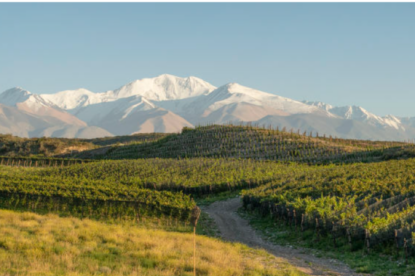Lisboa has everything a wine explorer could want. On the north side you’ll find beautiful vineyards, amazing beaches, some of the best surfing spots in the world and breathtaking mountains. But it is not all site-seeing places and natural scenery, Lisboa is still a cosmopolitan city with lots of history, art, geology, paleontology and golf to satisfy any whim you may have.
On the north side, the vineyards on the Southern Europe’s Gulf Stream, are located right between the cold and strong winds of the Atlantic coast and the heat of inland Portugal. At night, the land is naturally irrigated by the mist and early morning fog and during the day it receives warmth from sunny afternoons.
The intense humidity in both spring and summer is the main factor to produce Vinho Leve, a low alcohol wine (10% alc. by Vol. degree), delicious with fresh sea food or grilled fish.
This terroir makes it perfect for bright, juicy and fruity wines. Every grape variety responds differently to it. In 2017 the producers from the Lisboa Region had the Vintage of a Century. The grapes were excellent, and fulfilled all the requirements to make amazing wines and keeping good yields. This level of quality was achieved by reviving vineyards and adopting new winemaking techniques.
 VISIT LISBON, DRINK LISBOA.
VISIT LISBON, DRINK LISBOA.
When you start to explore the Portuguese wine scenery, you’ll find estates called quintas. They’re called this because at one time, many years ago, when Portugal was still being conquered, the owners of these lands (producers of wine) had to pay the King a tax fee of 20% of their production. This percentage, which is one fifth, means quinta parte in Portuguese, and that’s why they’re called: Quinta.
Nowadays, new generations of old wine families and Napa-like entrepreneurs are determined to add Lisboa to their top wine destination and drinking map.
With wine tourism in high gear, wineries aim to offer everything from tastings, blending courses, accommodation and event work as venue for events. As most people are fluent in both English and Spanish don’t hesitate to ask them questions about wine or food. So, book a flight and come visit some wineries at the nine regional D. O. C.’s.
DOC – ALENQUER:
Located on the east and south side of the Montejunto mountains, subject to the cold winds from the Atlantic, Alenquer produces great white, red and rosé wines as well as Vinho Leve.
DOC – ÓBIDOS:
Located near the Peniche peninsula, west of the Candeeiros mountains, it produces superb wines and white sparklings. At this appellation, Vinho Leve has one of its higher terroir expressions. Four great golf courses, await your visit!
DOC – TORRES VEDRAS:
Red and white wines have a great presence here as they enjoy the proximity to both the sea and the mountains. This is an historical central region, with great food, proximity to golf courses and also beaches.
DOC – ARRUDA:
An area with a regular production of red and white wines, although the reds are still better known than the whites. This area produces Vinho Leve very well known to the public.
DOC – ENCOSTAS D’AIRE:
On the coastal limestone hills, the northern edge of Lisboa Region produces some of our most distinctive wines and the Historic Wines of Ourém.
DOC – LOURINHÃ:
This is a unique demarcation as the Lourinhã Tália grape DOC is the only DOC in Portugal solely demarcated for Aguardente or Brandy. The DOC Brandy is produced from the Tália varietal, a grape which is none other than the Ugni Blanc, the grape responsible for the famous Cognac and Armagnac brandies in France.
DOC – BUCELAS:
This is the only area demarcated solely for its white wines, produced mainly from the grape varietal Arinto. These are great wines to pair with seafood, light meals or even Asian food!
DOC – COLARES:
Sandy soils that even during the great destruction of vines due to Filoxera (1865-1910), could be planted as the disease does not attack vines planted in sand. Still in production, Colares has amazing whites made with Malvasia Fina, and reds made with the famous Ramisco grape.
DOC – CARCAVELOS:
Carcavelos is a fortified wine like Port or
Madeira. It is a sweet wine and it has a very well balanced acidity. It can be used as aperitif, served cold, or as a digestive, served at room temperature. The main grape is Galego Dourado but it also has a little Castelão and a touch of Arinto.
A UNIQUE REGION
The Portuguese in this region are masters at blending several grape varieties producing delicious wines with premium blends. Winemakers from all over the world dream of Lisboa’s blending expertise and many fly all the way here to taste and experience it.
Lisboa’s wineries focus on quality and on customer pleasing, so you will find not only blends of Portuguese indigenous varieties (out of the 250+ different varietals, you’ll find grapes such as Arinto or Touriga Nacional) but also blends that combine
Portuguese and international varieties like Chardonnay, Cabernet Sauvignon or Syrah. Rosé and sparkling wines are also the result of very carefully made blends that go along with the international trends.
The wines are excellent to drink on their own and also to make easy food pairing choices that range from meat to fish, to seafood and even cheese dishes.
A wide range of Lisboa wines are available in the United States so the best way to discover Portuguese wine, you may ask? … Taste, Taste it, Lisboa Style!
Last Updated: May 4, 2023















